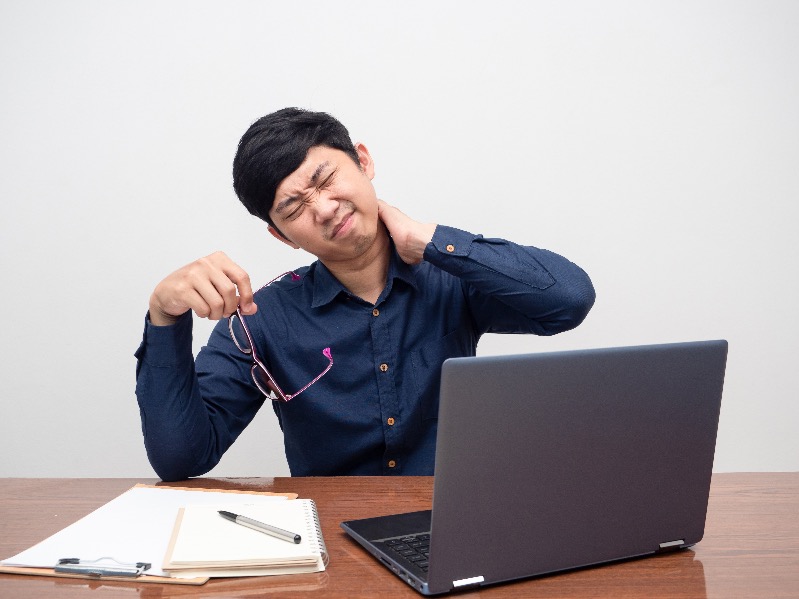Neck Pain? You May Have Tech-Neck!
Do you look at a computer all day long? Do you check emails or texts on your phone? Do these activities cause pain in your neck?
You may have what’s called a “tech neck”. Good news is, we see this pretty often. Unfortunately due to the pandemic and people being on their computers all day long, we noticed a lot more people with these neck pains.
What happens is people will sit in a forward-leaning position, allowing their head to get out over and past their chest.
Sometimes it can be mild neck pain, other times it could be neck pain that radiates to your head causing headaches. It can even cause pain that travels all the way down your arm.
Tech-Neck Evaluation & Management
To evaluate for tech neck, we need to do a thorough examination. First, we’ll check out your posture. Most of our patients with tech neck have a forward head posture and rounded shoulders. This often leads to muscles being stretched all day long and getting tired and achy.
Next, we check your range of motion to see what movements are harder or more uncomfortable for you to perform.
Then we perform a series of orthopedic tests to rule in or out any other underlying issues that could be causing neck pain.
The key to helping someone feel better quickly is to determine what their true diagnosis is that is causing them the most discomfort.
Once we know what the main issue is, we can form a treatment plan to see relief quicker and get you back to living pain-free.
Tech-Neck Treatment
In our office, we have many tools to treat Tech Neck. Our primary tool in the office is the chiropractic adjustment. Usually, after adjustments, we do some assisted stretches.
We also want to prevent you from getting the same neck pain again. In order to do that we like to educate you on how to set up an ergonomic workstation and how to sit at your desk.
Lastly, we want to teach you exercises to help you get better, faster.
Tech-Neck Exercises
Tech-neck sucks. The first thing that you can do when you are feeling pain is called a cervical stretch. In this stretch you will lightly use one hand and place it on top of your head and pull your head gently to one side. You will want to hold this stretch for 30 seconds.
You can also do a pec stretch. Take one arm and place it at 90 degrees on a wall or doorway and lean away from the arm. You should feel the stretch going across the front of your chest and a little bit into your arm.
If you tend to have pain on the top portion of your shoulder or your upper trap muscle, you can use a lacrosse ball to help loosen the area. Place that ball on the wall and find a tight spot in that muscle and work that area to try to get the muscle to relax.

